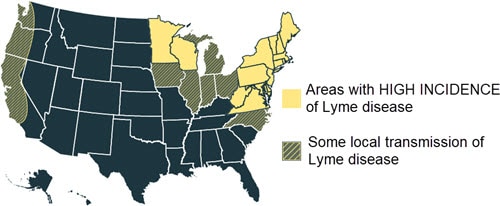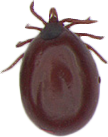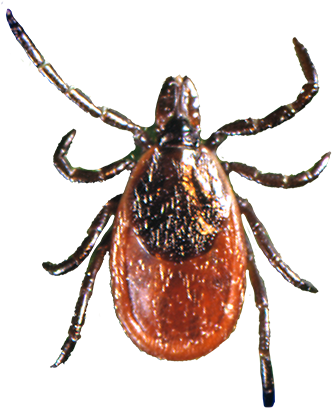Lyme Disease Prophylaxis After Tick Bite
- Home
- Tick ID
- Overview of Tickborne Diseases
- Lyme Disease
- Tickborne Relapsing Fever (TBRF)
- Hard Tick Relapsing Fever
- Anaplasmosis
- Ehrlichiosis
- Rocky Mountain Spotted Fever
- Rickettsia parkeri Rickettsiosis
- Tularemia
- Babesiosis
- Heartland and Bourbon Virus Diseases
- Colorado Tick Fever
- Powassan Virus Disease
- Tickborne Diseases Abroad
- Tick Bites/Prevention
- Lyme Disease Prophylaxis After Tick Bite
In areas that are highly endemic for Lyme disease, a single prophylactic dose of doxycycline (200 mg for adults or 4.4 mg/kg for children of any age weighing less than 45 kg) may be used to reduce the risk of acquiring Lyme disease after a high-risk tick bite.
Benefits of prophylaxis may outweigh risks when all of the following circumstances are present:
- Where the tick bite occurred, are ticks likely to be infected with Borrelia burgdorferi?

- Was the tick removed within the last 72 hours?
- Was the tick’s body engorged with blood (not flat)?

Flat

Engorged
- Was the tick an Ixodes (blacklegged) tick?

Nymph

Adult
- Is doxycycline safe for the patient? Considerations include allergy to doxycycline, pregnancy, and lactation.
Antibiotic treatment following a tick bite is not recommended as a means to prevent anaplasmosis, babesiosis, ehrlichiosis, Rocky Mountain spotted fever, or other rickettsial diseases. Instead, persons who experience a tick bite should be alert for symptoms suggestive of tickborne illness and consult a physician if fever, rash, or other symptoms of concern develop.
References
Nadelman RB, et al. Prophylaxis with single-dose doxycycline for the prevention of Lyme disease after an Ixodes scapularis tick bite. N Engl J Med. 2001;345(2):79-84.
Harms MG, et al. A single dose of doxycycline after an Ixodes ricinus tick bite to prevent Lyme borreliosis: An open-label randomized controlled trial. J Infect. 2021;82(1):98-104.